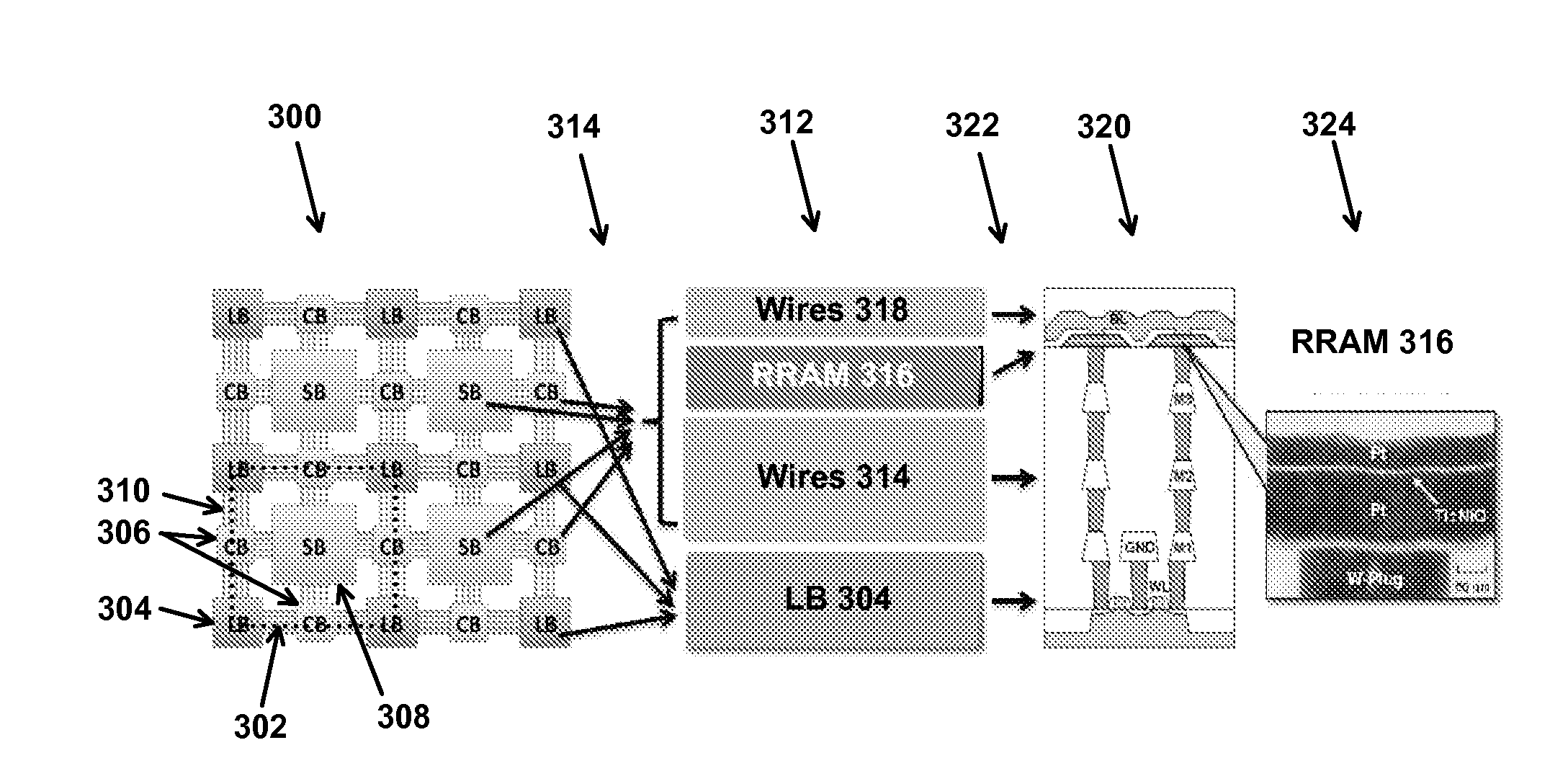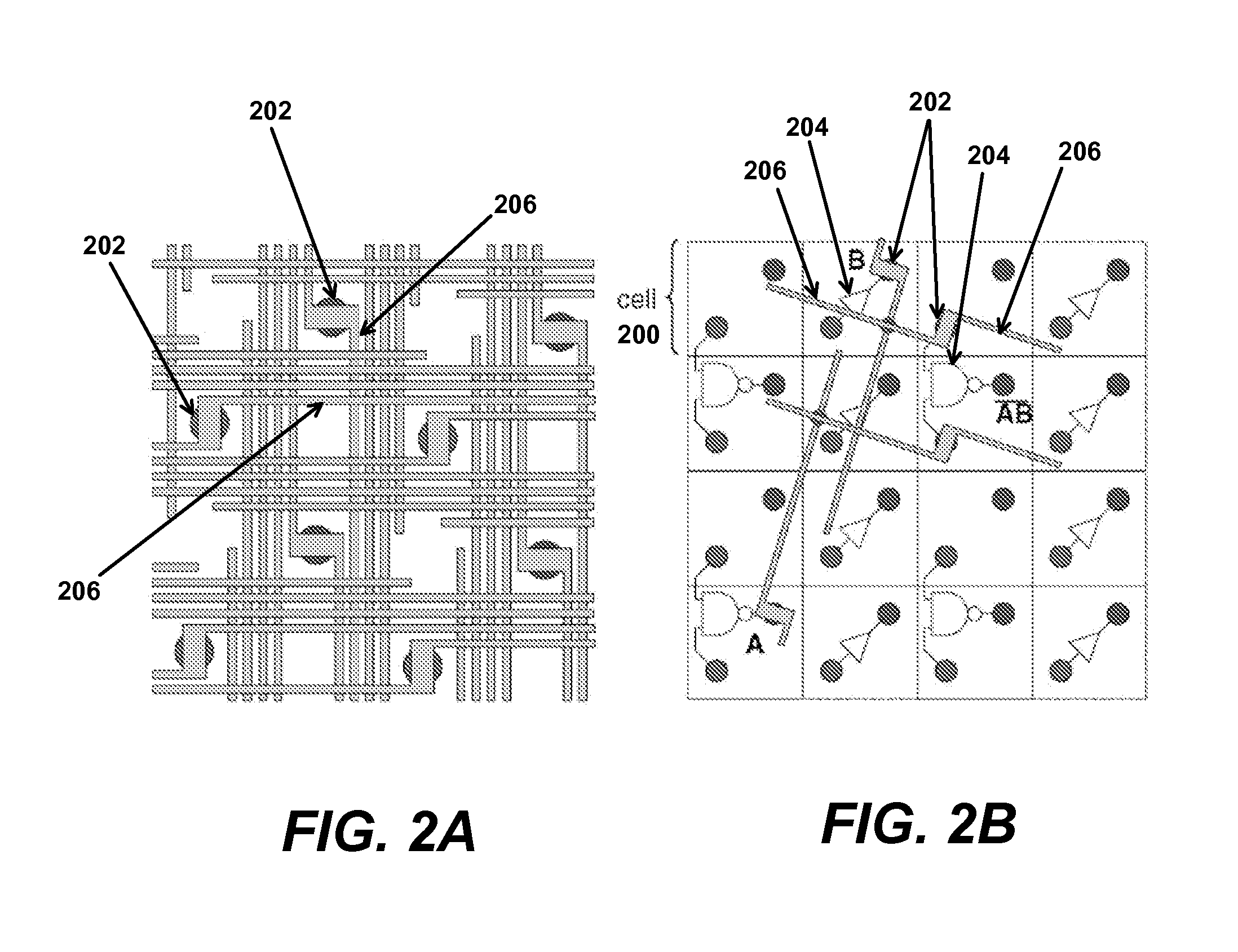Programmable logic circuit architecture using resistive memory elements
a technology of resistive memory elements and logic circuits, applied in logic circuits using specific components, pulse techniques, instruments, etc., can solve the problems of high overhead of programming circuits, undermine the benefit brought by replacement, and not solve the problem of extensive fabrication of routing buffers
- Summary
- Abstract
- Description
- Claims
- Application Information
AI Technical Summary
Benefits of technology
Problems solved by technology
Method used
Image
Examples
Embodiment Construction
[0026]In the following description of the preferred embodiment, reference is made to the accompanying drawings which form a part hereof, and in which is shown by way of illustration a specific embodiment in which the invention may be practiced. It is to be understood that other embodiments may be utilized and structural changes may be made without departing from the scope of the present invention.
[0027]Overview
[0028]The present invention redesigns FPGA programmable interconnects based on resistive memory elements, known as resistive random access memory (RRAM) or memristors.
[0029]Compared to [1], this invention has the following advantages:
[0030]1. This invention better fits the fabrication structure of resistive memory elements. The integration of SRAM cells in programmable interconnects were optimized for conventional FPGAs. One SRAM cell usually involves a CMOS layer and multiple metal layers. In contrast, a resistive memory element does not involve a CMOS layer and, in most case...
PUM
 Login to View More
Login to View More Abstract
Description
Claims
Application Information
 Login to View More
Login to View More - R&D
- Intellectual Property
- Life Sciences
- Materials
- Tech Scout
- Unparalleled Data Quality
- Higher Quality Content
- 60% Fewer Hallucinations
Browse by: Latest US Patents, China's latest patents, Technical Efficacy Thesaurus, Application Domain, Technology Topic, Popular Technical Reports.
© 2025 PatSnap. All rights reserved.Legal|Privacy policy|Modern Slavery Act Transparency Statement|Sitemap|About US| Contact US: help@patsnap.com



